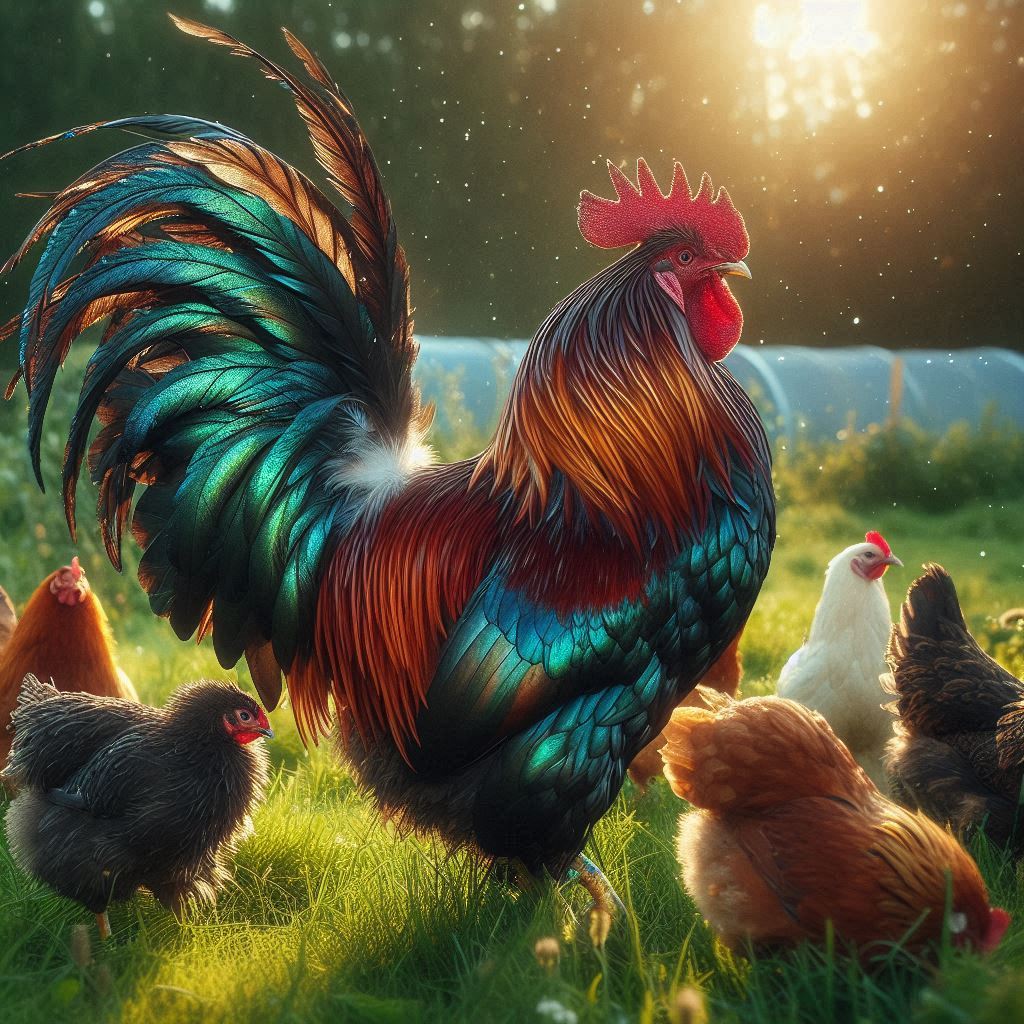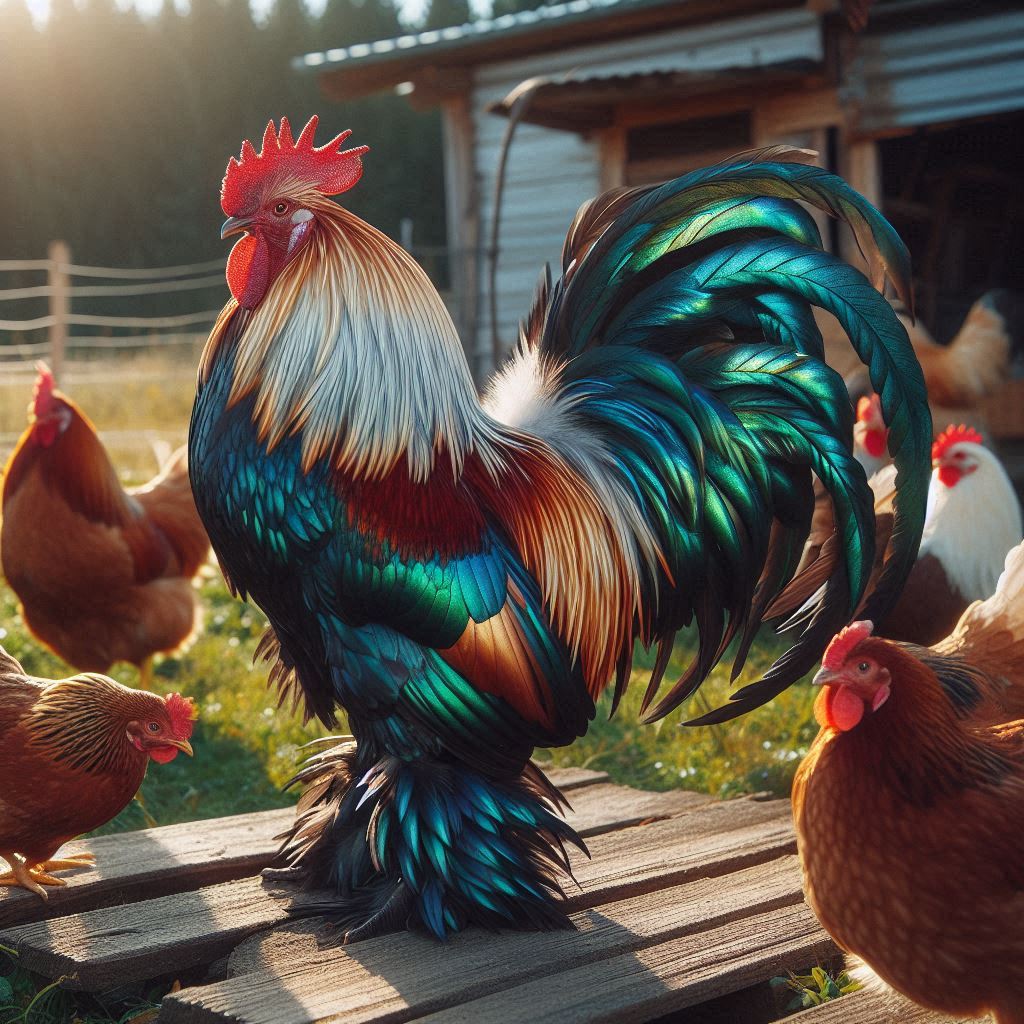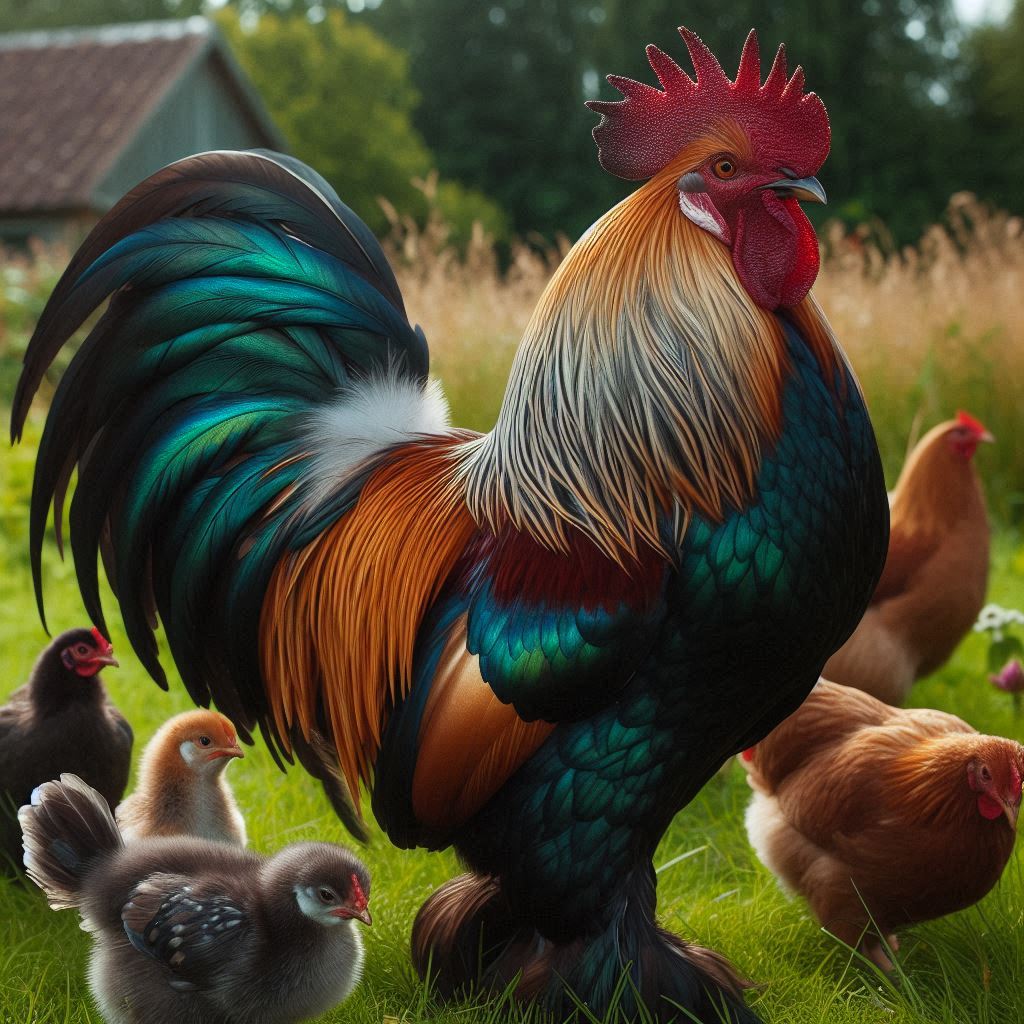The Ultimate Guide to Cock Fighting Breeds
Sabong roosters aren’t your average barnyard birds. These cock breeds are bred and trained for one purpose — fighting. Knowing your roosters can make or break your game, so let’s dive into the diverse breeds and what makes them tick.
The Importance of Breeding
Breeding plays a crucial role in cockfighting, determining the success or failure of a fighting rooster in the arena. Roosters aren’t naturally inclined to fight rather, they are selectively bred and meticulously trained for this purpose. Understanding the significance of breeding sheds light on the intricacies of this controversial sport.
Breeders devote years to refining and perfecting specific strains of roosters, focusing on traits such as strength, agility, and endurance. Through careful selection and breeding practices, they aim to produce birds with superior fighting abilities. This meticulous process involves pairing individuals with desirable traits to amplify them in subsequent generations.
The breeds that dominate the Sabong scene are the result of decades of selective breeding. Сertain strains have gained legendary status for their exceptional performance in the pit. These birds command high prices and are highly sought after by enthusiasts and breeders alike.
The importance of breeding extends beyond mere performance in the arena. It also encompasses aspects such as health, temperament, and conformation. Breeders strive to produce roosters that exhibit overall robustness and resilience.
Breeding practices in cockfighting are deeply intertwined with cultural traditions and heritage. Many breeders take great pride in preserving and perpetuating the bloodlines of their birds, which often carry historical significance within their respective communities.
What Breed of Rooster is Used for Fighting

The Asil breed is one of the most ancient and distinguished in the world of cockfighting, tracing its origins back centuries to India. Renowned for their robust physique and unwavering resilience, Asil roosters have earned a formidable reputation in the arena.
Physically, Asils are characterized by their muscular build, boasting broad shoulders and stout, powerful legs. These attributes contribute to their formidable presence and fighting prowess, enabling them to hold their ground against opponents with remarkable tenacity.
Asil roosters are renowned for their highly aggressive and determined nature. This innate drive and ferocity make them well-suited for the rigors of combat, as they fearlessly engage opponents with a single-minded focus on victory.
This breed has been revered for their unwavering courage and fighting spirit. Their resilience in the face of adversity has made them a favored breed among enthusiasts and breeders seeking birds capable of withstanding the intense demands of the pit.
Despite their aggressive tendencies, Asils are also known for their loyalty and devotion to their handlers. Many enthusiasts form deep bonds with their birds, recognizing and respecting the noble traits that define the Asil breed.
The Sweater breed of fighting rooster, although more modern than the ancient Asil, has gained a significant following within the cockfighting community. Originating in the United States, Sweater roosters are celebrated for their agility and strategic aerial maneuvers, making them a favorite among enthusiasts.
Sweaters are characterized by their slender and athletic build, distinguished by longer legs compared to many other breeds. This anatomy allows them to navigate the arena with precision and finesse, contributing to their exceptional speed and agility.
Sweater roosters are renowned for their ability to evade attacks effortlessly, utilizing their nimbleness and quick reflexes to outmaneuver opponents. Their adeptness in aerial tactics further enhances their combat prowess, enabling them to launch strategic strikes while minimizing the risk of retaliation.
Despite their slender frame, Sweater roosters possess remarkable strength and stamina, capable of enduring prolonged battles with remarkable resilience. This combination of speed, agility, and endurance has solidified their reputation as formidable competitors in the cockfighting circuit.
The Sweater breed’s popularity stems from its versatility and adaptability. Whether competing in short or long matches, Sweaters demonstrate a remarkable ability to adjust their tactics and strategies to suit the demands of the fight.
The Kelso fighting rooster breed, hailing from the United States like the Sweater, has gained widespread acclaim for its distinctive fighting style and strategic prowess in the arena. These American-bred roosters are revered for their power, agility, and cunning tactics.
Physically, Kelso roosters are typically characterized by their robust build and agility, often featuring light feathering that enhances their speed and maneuverability in combat. This blend of strength and nimbleness equips them well for the rigors of the pit.
Kelso roosters are known for their high intelligence and strategic thinking during fights. Unlike some breeds that rely primarily on brute force, Kelso birds demonstrate a more nuanced approach, preferring to assess their opponents and strategically counter-attack rather than charging in head-on.
This calculated approach to combat has earned Kelso roosters a reputation for their ability to outsmart opponents and exploit weaknesses with precision timing. Their strategic acumen and adaptability make them formidable adversaries, capable of turning the tide of a match with well-placed strikes and calculated maneuvers.
Despite their intelligence and tactical prowess, Kelso roosters are known for their tenacity and fighting spirit. They exhibit a fierce determination to emerge victorious, refusing to back down even in the face of formidable opponents.

The Hatch rooster holds a prominent position in Sabong, esteemed for its robustness and unwavering resolve. Originating from a blend of various strains, the Hatch breed boasts a harmonious fusion of desirable traits that make it a formidable contender in the pit.
Hatch roosters are characterized by their sturdy build, exhibiting strength and bulkiness that underscore their formidable presence. They often possess thick necks and large combs, physical features that contribute to their imposing stature and resilience in combat.
In terms of behavior, Hatch roosters are renowned for their straightforward approach to fighting, relying on sheer brute force and unyielding determination to overcome opponents. They exhibit a relentless drive to dominate the arena, pressing forward with unwavering resolve until their adversary is subdued.
This aggressive fighting style has earned Hatch roosters a reputation for their tenacity and ferocity in battle. They engage opponents with relentless intensity, delivering powerful blows with calculated precision to assert their dominance in the pit.
Despite their formidable demeanor, Hatch roosters also demonstrate a remarkable level of endurance and stamina, capable of sustaining prolonged bouts with remarkable resilience. This combination of strength, determination, and endurance cements their status as enduring favorites among Sabong enthusiasts.
The Lemon 84, sometimes referred to simply as ‘Lemon,’ is a breed highly esteemed for its remarkable stamina and endurance, particularly in the face of prolonged and grueling matches. Recognized for its distinctive features and exceptional resilience, the Lemon 84 has earned a reputation as a formidable competitor in cockfighting.
Lemon 84 roosters typically exhibit a medium-sized stature, coupled with bright yellow hackle feathers, from which they derive their name. This unique coloration sets them apart visually and contributes to their distinctiveness among other breeds.
In behavior, endurance is the Lemon 84’s defining trait. These roosters possess an unparalleled capacity to endure extended battles, outlasting opponents through sheer perseverance and stamina. Their ability to maintain high levels of energy and intensity throughout protracted matches makes them formidable adversaries, capable of wearing down even the most resilient opponents over time.
This emphasis on endurance as a key characteristic has made Lemon 84 roosters sought after among enthusiasts and breeders alike. Their reputation for toughness and resilience has solidified their standing as tough competitors in the world of cockfighting, earning them a place of distinction within the Sabong community.
The Science of Fighting Gamecock Breeding
Breeding gamecocks it’s a nuanced process. Breeders engage in meticulous selections spanning generations, emphasizing critical aspects such as bloodline management, genetic diversity, and physical conditioning to cultivate top-tier fighting birds.
Bloodline management is a cornerstone of cockfighting breeding practices. Breeders meticulously track lineage to preserve and enhance desirable traits across successive generations. This meticulous documentation ensures the continuity of specific characteristics like strength, agility, and endurance, crucial for maintaining a competitive edge in the arena.
Inbreeding and outbreeding strategies play a key role in shaping the genetic make-up of gamecocks. A balance between genetic purity and diversity is essential to avoid detrimental effects such as inbreeding depression while consolidating desirable traits. Breeders navigate this delicate balance by strategically incorporating new bloodlines to refresh genetic diversity while preserving valued traits.
Physical training is equally integral to the breeding process, complementing genetic selection with practical skill development. From an early age, young roosters undergo rigorous conditioning regimes tailored to cultivate agility, strength, and combat proficiency. This approach ensures that birds acquire the physical prowess necessary for success in the pit.
Training Techniques for Fighting Cock Breeds

Training Sabong roosters mirrors the regimen of athletes, requiring rigorous methods to refine their skills and enhance performance. Varied techniques are employed, with a focus on diet, exercise, and combat drills to cultivate strength, agility, and combat proficiency.
Diet forms a foundational element of rooster training, with high-protein meals serving to build muscle and bolster agility. Nutrient-rich diets are meticulously tailored to meet the specific needs of gamecocks, providing the essential fuel for their intense physical exertions in the arena.
Exercise regimens are diverse, encompassing activities such as running, flying, and even swimming to augment stamina and endurance. These foster agility and coordination, ensuring that roosters are primed for peak performance during fights.
Combat drills constitute an aspect of rooster training, simulating the intensity of actual matches while refining combat techniques. Sparring sessions provide invaluable opportunities for birds to learn how to maneuver and strike effectively, honing their instinctual fighting instincts and enhancing their tactical acumen.
The Ethical Dilemma
The ethical dimensions of Sabong demand careful consideration in light of concerns regarding animal welfare and the sport’s cultural significance. While some regard it as a cherished tradition, others condemn it as cruel and inhumane due to the inherent risks of injury or death faced by the roosters involved.
Critics, including animal rights organizations, decry cockfighting as a form of exploitation, citing the physical harm inflicted upon the birds and the perceived disregard for their well-being. Calls for bans and stricter regulations have grown louder in response to these concerns, driven by a desire to prevent unnecessary suffering and protect the rights of animals.
On the other hand, proponents of Sabong argue that it holds deep cultural significance in many communities, serving as a cherished tradition passed down through generations. They emphasize the importance of preserving cultural heritage and maintaining the autonomy of communities to practice traditions that hold meaning for them.
Amidst these divergent viewpoints, it is imperative to prioritize the welfare of the roosters at the heart of the sport. Efforts to mitigate harm and ensure humane treatment should be paramount, with implementing safeguards to minimize the risk of injury and providing proper care for birds before, during, and after matches.
Legal Regulations
As the sport’s popularity grows, so does the scrutiny from law enforcement and animal rights groups. While legal in some areas, many regions have banned or heavily regulated Sabong. Always check local laws if you’re interested in experiencing or participating in this age-old tradition.
